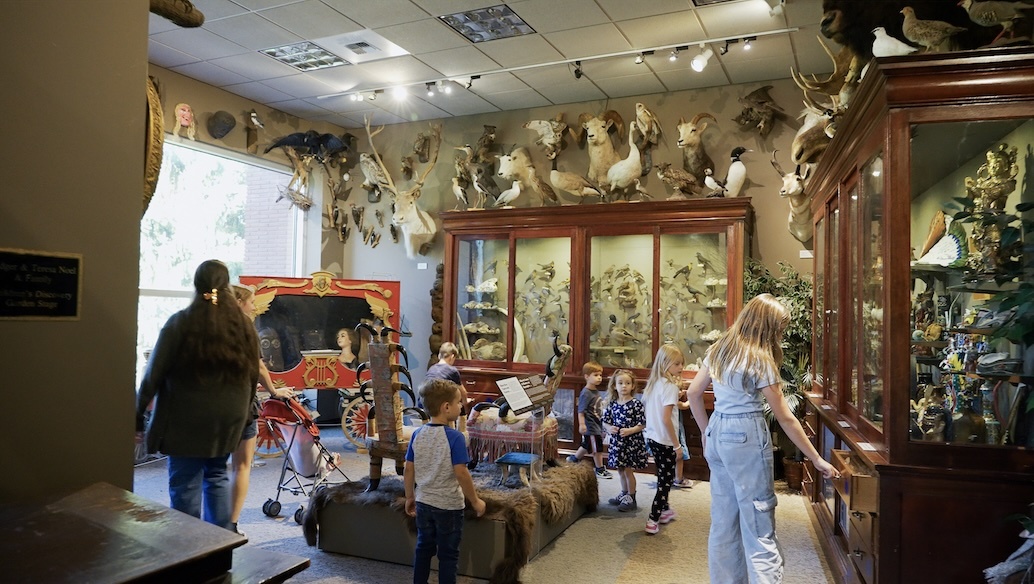
Current Exhibits
Cabinet of Curiosities
A Collection of Weird Stuff!
Before museums, collections were kept in churches and the private homes of the wealthy.
Humans have always collected things. What was collected and why varied greatly. Roman emperors collected oddities from across the Empire. Early Christian churches collected religious relics—bones of saints, pieces of the true cross, and the like— displayed in churches to attract pilgrims.
During the Age of Enlightenment (1600s and 1700s), the Western world was growing, with many discoveries and rapid changes in science and knowledge. Collecting became popular, and people with access to the world's many wonders created collections to amuse and astonish their friends.
The collections were displayed in “cabinets”—usually glass-enclosed cupboards or small rooms. Some oddities and collections were exotic, unusual, and even shocking—anything that would astonish visitors who knew little outside their experience. These private collections, known as cabinets of curiosities or wunderkammer (wonder-rooms), were private, not often used to educate, and usually displayed in no particular way—just odd items placed together.
However universities and other places of learning did put together research collections, and these have been an important part of study ever since. Unlike private collections, research collections were carefully organized. Large numbers of things were collected—enough to show the range and variety of each object. Research collections require a lot of room, so today, most are in major museums and universities.
To create our Cabinet of Curiosities, we took from our collections many odd objects that were collected by people from Yakima. Some would be welcome additions to a scientific research collection. Others are bizarre objects that would fit well in an odd private collection from the past. Everything is displayed randomly, just as it would have been in a Cabinet of Curiosities.
